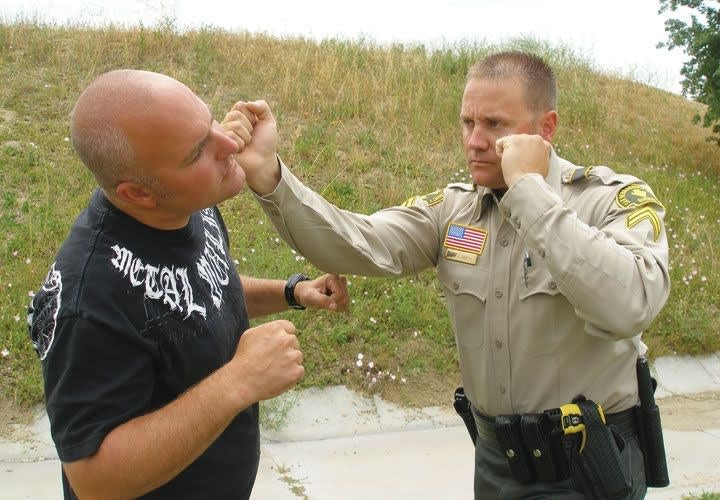He was off duty driving east on a main street in the city of Yucaipa when he saw something unbelievable. A man was driving his vehicle backward into eastbound traffic. Smith thought, This guy is backing into me at the same speed I am going forward.
The deputy swerved to get out of the way just as the driver stopped his vehicle. Smith got out of his vehicle and contacted the driver, who was clearly drunk. Smith identified himself as a deputy sheriff, told the driver to stay with the vehicle, and got on his cell phone and called dispatch. But when the drunken suspect heard Smith talking to dispatch, he suddenly attacked.
The suspect swung wildly at Smith's face. Although Smith had identified himself as a deputy, there was something the drunk did not know about him. Smith had been training in mixed martial arts and was skilled in defensive tactics. He squared up with the suspect and as the man dropped his rear hand, Smith hit him in the face, knocking him out cold. Smith thought, What a great hit. I knocked him out with one punch.
But within a few minutes, Smith realized there was something very wrong with his right hand.
As a result of the punch, the tendon of Smith's right ring finger had been severed at the top knuckle by the suspect's front teeth. Even worse, both he and the suspect were bleeding. The paramedics did their best to clean the wound, but Smith later contracted staph and got blood poisoning. After a painful surgery, several weeks off duty, months of rehabilitation, and an anxious wait for his blood test results, Smith still wonders, "Who won that fight?"











